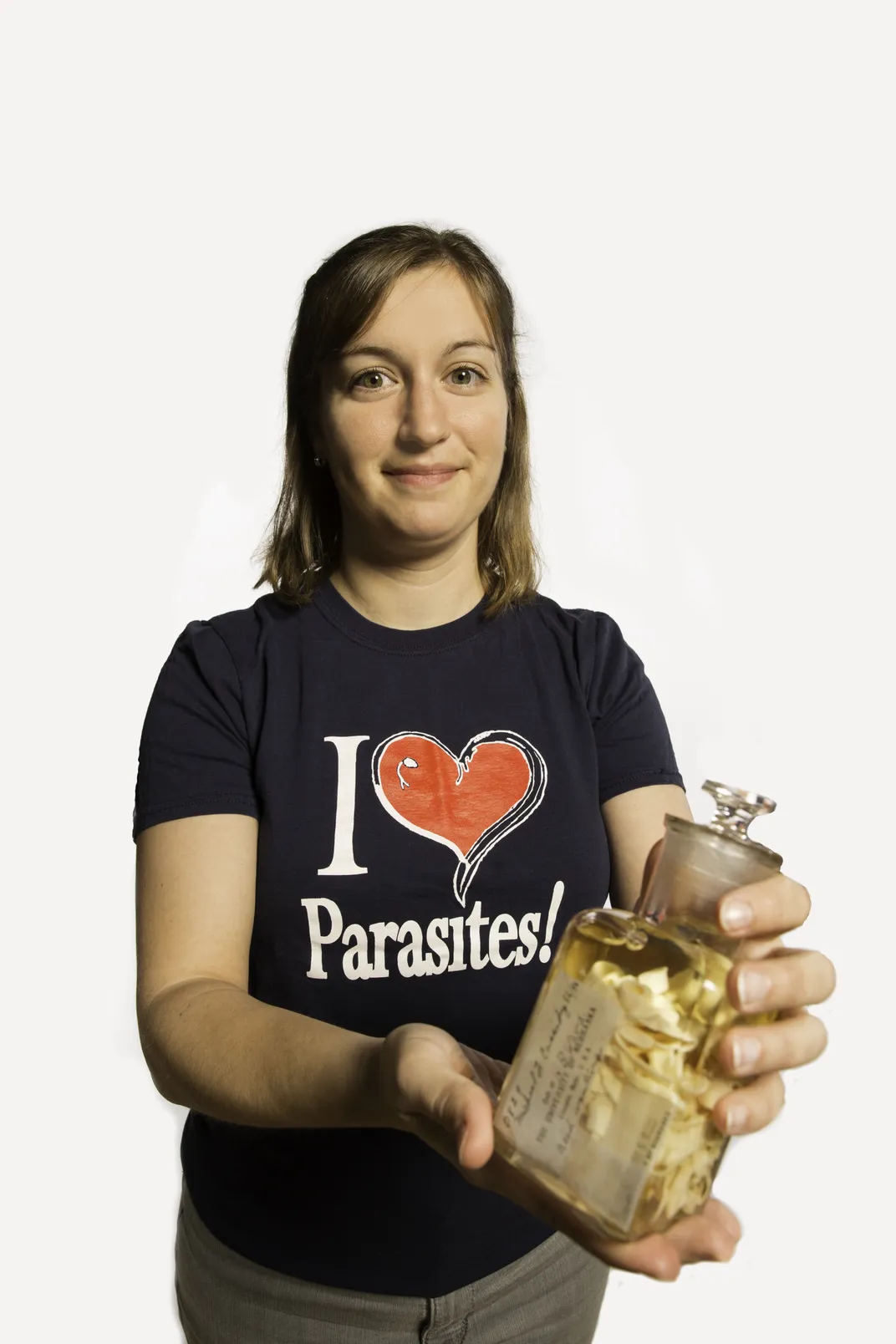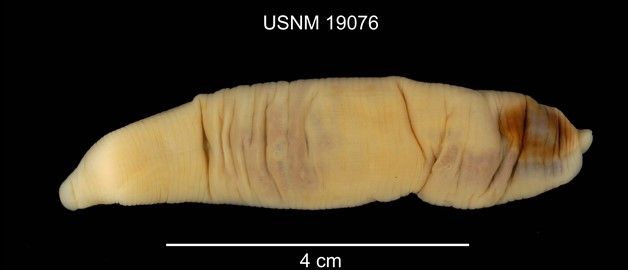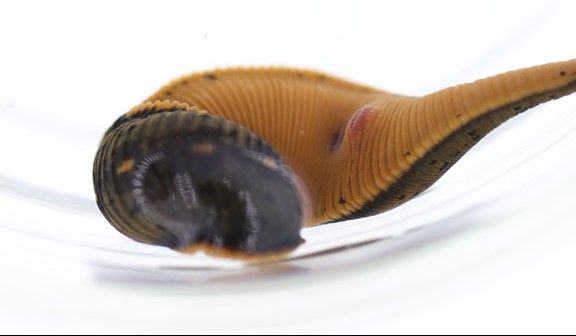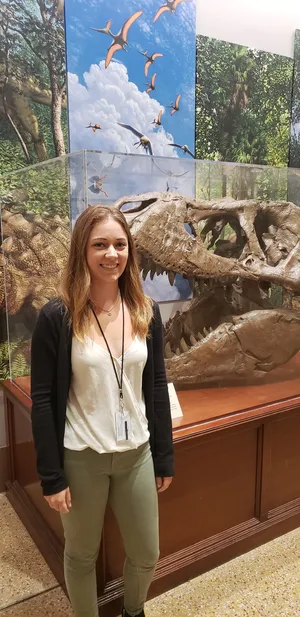NATIONAL MUSEUM OF NATURAL HISTORY
This Smithsonian Scientist is on a Mission to Make Leeches Less Scary
Smithsonian Curator Anna Phillips is on a quest to make leeches less repulsive to the public.
/https://tf-cmsv2-smithsonianmag-media.s3.amazonaws.com/blogging/featured/Leech_in_Hand.jpg)
Beneath the surface of freshwater streams in Maryland lives a dark-colored, slimy creature. From a distance, it looks like an olive-green worm with an orange belly. Reddish orange dots within spots of darker green line its back. Each end sports a suction-cup – one of which has sharp teeth designed to bite an unsuspecting host and snag a meal.
But it isn’t a typical worm. It’s a leech – a new species called Macrobdella mimicus that feeds on blood.
“When they swim, they look like ribbons,” says Anna Phillips, a research zoologist and the Smithsonian’s Curator of Clitellata and parasitic worms.
Phillips is on a quest to make leeches less repulsive to the public. But her goal is not to convert the world into leech-lovers like her. She simply wants to highlight an animal people don’t often think about – and perhaps help them not fear leech bites.
“Leeches get a bit of a bad rap,” she says. “But I can understand that it’s creepy to be standing in the water minding your own business and then all of a sudden you’ve got this large worm on you and you didn’t realize it.”
Mission Impossible: Love Leeches
Leeches are infamous for their blood-sucking nature. Those that feed on humans – called medicinal leeches – were once a popular form of medical treatment. One species in particular, the European medicinal leech, was in high demand in the 18th and 19th centuries to drain “bad” blood from patients and cure various illnesses. Today, leeches are still used in procedures such as finger or ear reattachments to help blood flow to the reattached tissue.
Though many find leeches revolting, Phillips wants to teach people that these worms may feel slimy and have an unsavory diet, but they aren’t so bad.
“They’re like a mosquito,” she says. “They come up, they attach, they take a little bit of blood and then they leave.”
In a sense, a leech bite is better than one from a mosquito. While mosquitoes transmit infectious diseases such as dengue fever, malaria, West Nile and Zika, researchers don’t think leeches carry any human illnesses.
“Mosquitoes are far scarier and more deadly than a leech will ever be,” Phillips says.

If handled properly, leeches are no more than a nuisance. People may be tempted to throw salt on them or burn them off, says Phillips, but it’s not necessary. A leech holds onto its host with suckers at each end – breaking the seal is enough to pull them off.
Burning or salting a leech can have unintended consequences as well. Like all animals, leeches have bacteria in their intestines to help them digest blood. When salted or burned, they will regurgitate the contents of their digestive tracts – including any microbes – into the wound.
It’s not worth the risk of infection, Phillips says. “There’s no reason to do anything mean to it.”
Not Just Bloodsuckers
Leeches are a crucial part of healthy ecosystems – including freshwater, oceans and damp land. Scientists can learn about a habitat by studying what kinds live there. Some species thrive in pristine water; others prefer water laden with lots of nutrients, such as farmland runoff.
In the U.S., the most well-known medicinal leech – though it’s not used in medicine today – is Macrobdella decora (macro for large; bdella is the Greek word for leech). Macrobdella decora lives in freshwater habitats such as streams or swamps where it feeds on blood from fish, amphibians or mammals – including humans.

Not all leeches, however, thrive on red bodily fluids. There are more than 700 species around the world, many of which feed on something other than blood. Some gorge on animals such as snails or insect larvae. Others, such as the Giant Red Leech from Malaysia, dine on earthworms.
“If they’re big enough to wrap their mouth around an earthworm, they will slurp it down like spaghetti,” Phillips says.
But Phillips’ favorite leeches are bloodsuckers. Macrobdella species are high on her list, of course. The other is a leech she first studied as an intern at the American Museum of Natural History in New York: Philobdella floridana, a species that lives in swamps the southeastern U.S.
An unexpected new leech
Recently, Phillips and her team uncovered a new leech species inhabiting waters from Georgia to New York – the first North American medicinal leech described in over 40 years.

In a paper published August 15 in the Journal of Parasitology, Phillips and her colleagues described the new species, which they call Macrobdella mimicus. They dubbed the new leech “mimicus” because it looks nearly identical to M. decora and thus remained hidden in plain sight for decades.
“Everyone assumed that with the North American medicinal leeches, we knew all that were out there,” Phillips says. “We didn’t really expect to find a new species.”
The team initially thought leeches that they’d captured in Maryland in 2015 were M. decora. But genetic sequencing revealed a different story. The specimens had different signatures in parts of their DNA that scientists rely on to define species, meaning that it might be another kind of leech. The group decided to take a second look.
It soon became apparent that Phillips and her crew had a new Macrobdella species on their hands – the first since 1975. There were subtle differences in the leech’s appearance compared to M. decora and they began to find M. mimicus in other places.
Additional leeches captured on a trip to South Carolina proved to be the new species, as were museum specimens from collections at the Smithsonian’s National Museum of Natural History, North Carolina Museum of Natural Sciences and Virginia Museum of Natural History. The oldest specimen was from 1937 – Macrobdella mimicus had been hiding in plain sight for at least 82 years.

“It has been especially exciting to bring together all of the museum collections with new specimens from the field to better understand this new species,” Phillips says.
The discovery suggests that researchers have yet to find myriad leech species – even in regions where they thought they knew them all. Phillips hopes that as she learns more about the diversity of these blood-feeding worms, she can help others see how compelling they are.
“I don’t know if I’ll ever get people to think they’re not creepy,” Phillips says. “But if I can hold more than a 5-minute conversation with them about leeches, then we’re doing pretty well.”
Related stories:
Check Out Some of Our Most Popular Discoveries from 2018
Can Genetics Improve Fisheries Management
Countdown to the New Year: 7 of Our Favorite Discoveries from 2017

